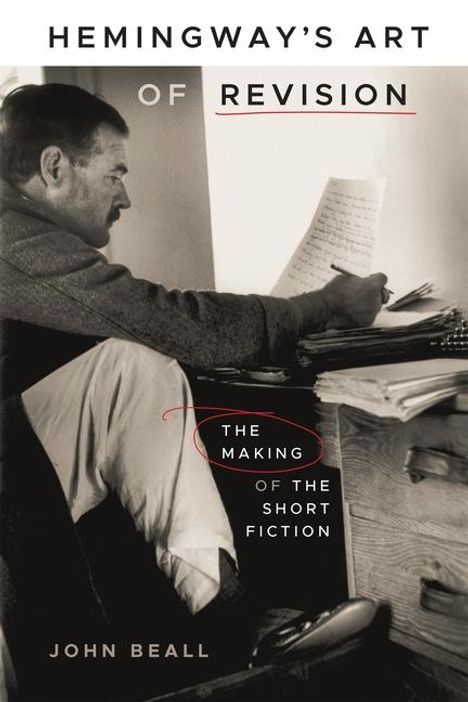John Beall: Hemingway's Art of Revision, Gebunden
Hemingway's Art of Revision
Buch
- The Making of the Short Fiction
lieferbar innerhalb 1-2 Wochen
(soweit verfügbar beim Lieferanten)
(soweit verfügbar beim Lieferanten)
Aktueller Preis: EUR 47,86
- Verlag:
- LSU Press, 05/2024
- Einband:
- Gebunden
- Sprache:
- Englisch
- ISBN-13:
- 9780807181157
- Artikelnummer:
- 11758686
- Umfang:
- 310 Seiten
- Gewicht:
- 630 g
- Maße:
- 229 x 152 mm
- Stärke:
- 21 mm
- Erscheinungstermin:
- 1.5.2024
- Hinweis
-
Achtung: Artikel ist nicht in deutscher Sprache!
Klappentext
"In Hemingway's Art of Revision: The Making of the Short Fiction, John Beall examines in close detail two of the author's vignettes from the first version of In Our Time and ten of his short stories, with an extensive focus on manuscripts and typescripts, as part of a broader examination of how Ernest Hemingway crafted his distinctive prose through a rigorous process of revision. The first three chapters discuss the influence of Hemingway's three most important modernist mentors: Ezra Pound, James Joyce, and Gertrude Stein. The first chapter focuses on Pound's influence as the editor of the Inquest Series, of which Hemingway's in our time was the final publication. The second chapter examines the affinities between Joyce's "The Sisters" and Hemingway's "Indian Camp." In particular, Beall develops the case for Joyce's influence on Hemingway's decision to revise the story to maintain the reader's focus on young Nick Adams's point of view in his first encounter with death. Chapter three explores Hemingway's revisions of "Cat in the Rain" as reflecting the influence of Stein's novellas and sketches, as well as that of Joyce's stories and novels. The remaining chapters delve into the artistry of Hemingway's extensive revisions in later masterpieces from "Big Two-Hearted River" to "Fathers and Sons." Beall's discussion of "Big Two-Hearted River" shows that Hemingway's revisions were not simply cuts and omissions, but included several paragraphs that he added to slow down the narrative and represent Nick Adams's careful observations of a kingfisher and trout as he watched their shadows on the river. The chapter on "The Battler" and "The Killers" explores the extent to which Hemingway's revisions brought racial conflicts to the forefront of each story and portrayed Bugs and Sam as guides for Nick Adams. A subsequent reading of the story "Now I Lay Me" shows that, in rewriting the story, Hemingway developed his portrait of Nick Adams as a writer making up imaginary rivers to cope with the traumas of childhood and war. A chapter on "A Way You'll Never Be" focuses on how Hemingway's revisions developed crucial story elements-including Nick's interior monologues, manic lecture about grasshoppers, and wacky sense of humor-that showed the character restoring a sense of emotional balance despite his memories of being wounded in World War I. Subsequent chapters on "Fathers and Sons," "Indian Camp," "Hills Like White Elephants," "The Gambler, the Nun, and the Radio," and the concluding chapter, in part focused on drafts of "The Snows of Kilimanjaro," offer new discussions of the author's process of revision based on his manuscripts and typescripts published in the Hemingway Library Edition. In the end, by drawing attention to the meticulous edits, additions, and deletions that helped shape these texts, Beall reveals how extensively and richly Hemingway revised his drafts while composing some of his most powerful short fiction. Hemingway's Art of Revision gives a detailed view of a great prose stylist at work"--
John Beall
Hemingway's Art of Revision
Aktueller Preis: EUR 47,86


